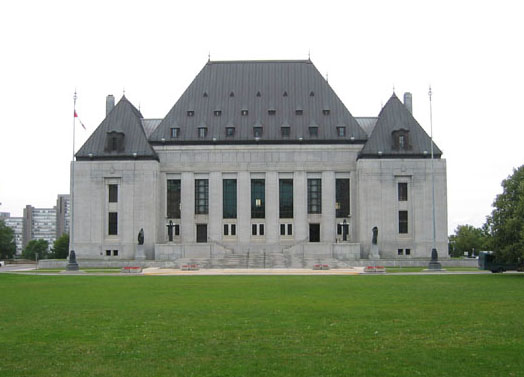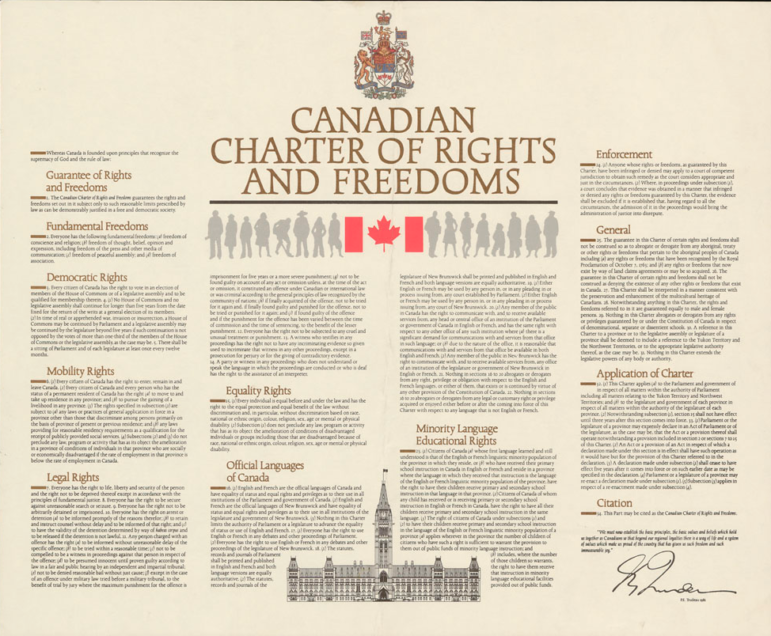Update: In June 2018, the Division Court heard the case, here’s our story on those arguments.

It’s easily the biggest legal case out of City Hall yet – the Courts will decide on the balance between transgender rights and political party expression, combined with the classic question of Confederation – the divide and overlap between federal and provincial jurisdictions, this case is likely bound for the Supreme Court of Canada.
The Christian Heritage Party (CHP) versus City of Hamilton will define transgender rights, free expression rights for political parties, and the roles of federal and provincial human rights codes – it a case The Public Record will track closely in the coming years.
Here’s an overview of some of the issues and background in this case.
Background
In July 2016, the CHP’s Hamilton Mountain riding association purchased bus shelter advertisements.
The ads showed a person – with a stereotypical male haircut, heavy jacket, and baseball cap – walking into a door labeled “ladies showers”. In the text accompanying the image, the ad stated “Competing Human Rights … Where is the Justice”.
Hamilton Mayor Fred Eisenberger and Councillor Aidan Johnson determined the ads to be unacceptable and demeaning to the transgender community, and the City removed them from bus shelters.
The CHP Files Court Challenge.
The CHP filed a Charter challenge of Council’s decision, and the matter is heading to court.
Jim Enos, the CHP’s – a registered federal political party – candidate for the riding of Hamilton Mountain, says the ads were comment on Bill C-16 “An Act to amend the Canadian Human Rights Act and the Criminal Code” which was in second reading and is now awaiting third reading in the House of Commons. Once passed, C-16 will give gender identity or expression the full protection of law.
Councillor Johnson say the ads were a response to the City’s recent policy changes to ensure transgender individuals can use the washroom of their gender identification.
The Issues
Let’s look at this from three angles which overlap: the current evolving case law regarding free expression and bus advertising, the Ontario Human Rights Code versus the Canadian Human Rights Act, and the ongoing debate surrounding Bill C-16 and the balancing of the role of the Court versus the role of Parliament.
Freedom of Expression and Bus Advertising

In 2009, the Supreme Court of Canada ruled the free expression protections of The Charter of Rights and Freedoms apply to advertising on government-operated public transit.
The Charter is not absolute, speech can be restricted. (See the Oakes Test).
In 2004, Vancouver’s public transit agency refused a ‘get out the vote’ advertisement, citing their policy imposing a blanket ban on all political advertising. The Canadian Federation of Students took them to court.
In Greater Vancouver Transportation Authority v. Canadian Federation of Students — British Columbia Component, [2009] 2 SCR 295, 2009 SCC 31, the Supreme Court of Canada ruled public transit agencies controlled by government are “government” for the purposes of The Charter, political advertising on buses are protected expression, and Translink’s blanket ad was not a defensible restriction under the Oakes Test.
The 139 paragraph ruling does discuss the balance between the Charter and reasonable limits, and the nature of bus advertising due to the very visible and public presence of buses. However, the ruling does not provide a clear example for this CHP vs Hamilton situation.
Common law is built upon case law. Supreme Court of Canada decisions are interpreted by lower courts, and this is ongoing with the 2009 decision. The Canadian Legal Information Institute records 90 cases citing the 2009 ruling.
These cases are favourable to the City. However, none of them involve a registered federal political party expressing itself on a matter being debated in Parliament.
Many cases involve abortion ads, other cases on hot button issues.
An interesting case involved a political ad in Edmonton purchased by the American Freedom Defense Initiative (AFDI) about “honour killings” and included the logo for an organization called “SIOA” which stands for “Stop Islamization of America”.
In American Freedom Defence Initiative v Edmonton (City), 2016 ABQB 555A, the Alberta Court ruled the City was justified in banning the advertising.
Members of the University of Calgary’s Faculty of Law wrote extensively on this case, both on their blog ABlawg.ca and in law publications.
ABlawg.ca summarizes the case well, and my summary here is heavily based upon this work.
The Court held municipalities can impose community standards upon ads (Edmonton is using the Canadian Code of Advertising Standards.)
The Court found the advertisement was not designed to help victims of religious extremist but instead designed to (para 94):
…bring the Muslim population of Edmonton, including Muslim/Islamic Faith in general into public contempt or ridicule. This purpose is clear from a review of the AFDI website as well as the SIOA’s website. The aim is to encourage Muslim individuals to leave Islam and convert from their Muslim faith, or alternatively to advocate special treatment of Muslims and their exclusion from non-majority Muslim countries.
For CHP v. Hamilton, the City will likely cite this case.
An Alberta Court recently ruled in favour of Grande Prairie’s refusal to run pro-life/anti-abortion advertisements on their buses. The case, Canadian Centre for Bio-Ethical Reform v Grande Prairie (City), 2016 ABQB 734, is already being discussed in legal circles with ABlawg focusing on the case’s use of the captive audience doctrine, and Leonid Sirota writing the Canadian Centre for Bio-Ethical Reform (CCBR) should appeal the decision in a post entitled Aborting Freedom of Expression.
Here in Ontario, there are no post-2009 court rulings on bus advertising citing 2009 SCC 31.
Recently, in Peterborough, the City choose to not fight the CCBR and reached an out-of-court agreement allowing CCBR ads. The CCBR sought a court ruling that the City was bound by the Charter to run the ads, the court declined to make the order.
Federal versus Provincial Human Rights Codes

The case has another classic element of Canadian constitutional litigation: the clash of federal and provincial jurisdictions.
The City of Hamilton is a creature of the Province of Ontario, while it is separate from the Province and its actions do not represent the Province, the City only has the powers which the Province grants it.
The Ontario Human Rights Code protects transgender and gender non-conforming people from discrimination – this is the basis for the recent settlement between the City of Hamilton and a transgender woman who as denied access to the public washroom at the MacNab Transit Terminal.
The Canada Human Rights Act does not. (At least not yet, Bill C16 will change this.)
The CHP may argue that provinces, and their municipalities, cannot interfere with federal parties expressing themselves on matters before Parliament, and the Canadian Human Rights Act not the Ontario Human Rights Code should apply in this case.
The clash between federal and provincial laws is one of the reasons this case is very likely to go to appeal, and possibility to the Supreme Court of Canada.
Free Expression and Debates Before Parliament
The CHP does not have any seats in Parliament. There is a open question of how the Courts balance their role against the role of Parliament in a matter such as this.
The Courts will have to carefully consider the restrictions that can be put in place on expression by a political party related to a matter being debated in Parliament.
On this matter alone, the case will require the depth of review that results from a hearing in front of a panel of justices at the Ontario Court of Appeal.
A Case to Watch
Both the CHP and Hamilton’s City Council are motivated for this legal battle, and well resourced to wage it. Both hold their positions strongly, and both see a major opportunity to establish favourable case law.
For the CHP, their ability to strongly express their religious views. For City Council, the opportunity to show themselves as progressive political leaders.
For the legal community and the various parties who will intervene at Appeal, this case provides a much need opportunity to clarify the bounds of the Charter in political speech and in paid advertising facilitated by government.
Post-Script: Arguments Not Covered in this Post
Legal submissions, such as will be entered in this case, often cite dozens of cases. If you are so inclined, I encourage you to read the ABlawg.ca post on the Edmonton case to the end where they discuss the numerous cases related to the Charter tests of hate speech, including the more recent Saskatchewan (Human Rights Commission) v Whatcott 2013 SCC 11 ruling.
Human Rights Codes across Canada have been updated in recent years to include protection for transgender persons. There is much anticipation for the Supreme Court of Canada to hear a case involving the rights of the transgender community in light of these changes. The hope of this community is that a case will finally get to the Supreme Court of Canada, and that the Supreme Court will declare transgender Canadians entitled to the protections of Section 15 of the Charter. For more on this, and a great background on the legal issues facing transgender Canadians, I recommend reading the thesis of Michael Wun Ho Tam entitled Explicit Legal Protections for Transgendered Canadians: Why it is Necessary and How it Might be Done
